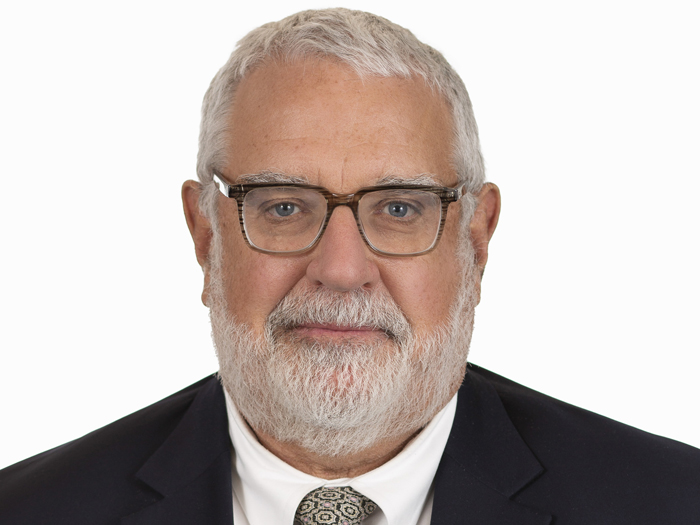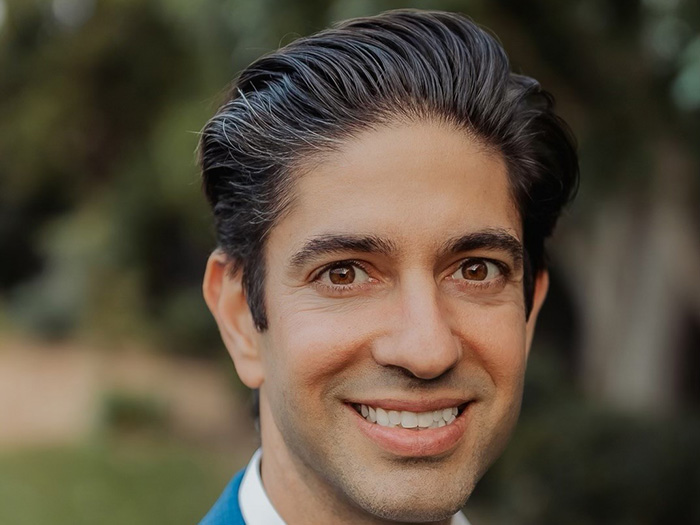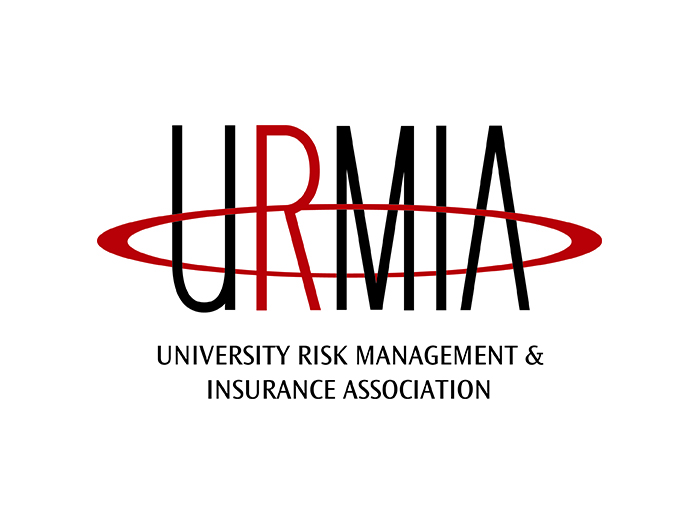10 Questions for Pennsylvania Lumbermens’ John Smith, Part 2

In part one of this Q&A, John Smith, president and CEO of Pennsylvania Lumbermens Mutual Insurance Company, discussed the challenges and opportunities of writing coverage for U.S. wood-related businesses in 2023.
Now, his conversation with Risk & Insurance® continues, edited for length and clarity.
R&I: We talk to executives, and they usually appreciate top line growth. They like to see it, but they also want to make sure they are underwriting right along with it. A lot of companies are struggling getting the right executives and the right talent in place to conduct their business. What’s that looking like for you? You’ve got the top line growth going, that’s great, but how do you feel about your ability to manage the talent piece?
JS: If you think about just talent and the Great Resignation, we’re seeing that in fits and spurts. We’ll go for months and not lose anybody and then lose three people in three weeks. We have not come back into the office yet, and in fact, we are hiring on a remote basis. So, the fact that we can now pick up an underwriter on the west coast as opposed to limiting our search to the greater Philadelphia area is great.
So while the Great Resignation has hurt us, our move to a remote operation has actually been helpful to us from a staffing standpoint. We’ve said for years that our goal is to mix young with old. If you’re 55 or 58 or 60 years old and you want to try something new, you got a place at PLM because age doesn’t bother us. We think that brings maturity and experience.
We’re looking for multi-generational talent, if you will.
At the same point in time, we’ve got an internship program that runs at the high school level and one at the college level. So we’re bringing in interns constantly every year.
We’ll have four high school interns in this year and last summer, we had seven college interns, which for a small company is a fairly significant number. If the internship works in our estimation, we bring them back for a second year. If it works after the second year, they walk out of here to their senior year with an offer of employment as well as, if they sign that offer within 30 days, we’ll give them $5,000 towards their senior year of tuition and then we’ll work them on a part-time basis.
That seems to work well for us. I think we have the same problem that everyone else has. It’s retaining that young talent once they are on board fulltime.
We just lost the young man who has a risk management degree. This young man’s comment on an exit interview was that PLM was a great place to start his career. We’ve got to get them to think about PLM being a great place to “spend” their career, to “invest” their career, and so that’s a challenge to us! I think if we can broaden out how we look at these people and give them the opportunity to do multiple things, we might be able to retain them.
A lot of the people coming out of risk management programs in the U.S., they want to be underwriters and they don’t really recognize the opportunities in sales, loss control, claims, marketing!
We’re trying to expose them to that because you can only have so many underwriters in the organization. I think it says something about us as a small company, that 10 years ago, we never lost an employee to one of the leading markets in the country. The big name company’s were not recruiting in our talent pool.
Today, that’s no longer the case.
You must be involved in professional education at PLM, we have had five people pick up their CPCUs this year and I continue to be involved with that. All my senior leaders are involved in continuing education. So we’ve built up a fairly strong cadre of people.
We look at the business today and say to ourselves, we just can’t compete on price (of course we were kidding ourselves like everyone else that you could). It’s tough to compete on coverage in this niche. We got to compete with people. We’ve got to field the best team. Whether you’re 22, 42, or 62, you need to hone your skills. So, you must be involved in professional continuing education.
We do, on Monday afternoons every week, an hour of specific insurance training. It might be sales, might be underwriting or a host of other topics. On Fridays, we do a lunch and learn on systems training, which we get all the tricks and tips, if you will, of various systems. Even things like Excel and Outlook are focused on.
We use The Institutes and their training material and programs; we use the National Association Mutual of Insurance Company for certain course work. We bring in outside speakers. We probably spend more money than I think we do training people, and that’s okay because we’ve got a group of well-educated talented insurance professional that can allow us to compete for our business with anyone in the marketplace today!
R&I: You talk about where your clients are. They’re in a bunch of different states. Sometimes they’re in fairly remote areas, maybe they’re in CAT exposed areas. There’s a lot that’s changing in terms of property exposures as you well know across the country. Is that changing your risk mitigation dialogue with your clients? Say, if you’re in Oregon right now or Northern California, gosh, you’re seeing wildfires like we have not seen in our time.
JS: First off, keep in mind, we don’t just write the property. We write the general liability, auto and umbrella as well. So we’ve got the same problems that any casualty writer has with traditional legal hell holes, nuclear verdicts, claims inflation, etc.
Also, keep in mind that while you want to think this business is all rural, for years, our largest lumber yard was in Manhattan. We had 14 risks in the cordoned off area for the World Trade Center disaster in lower Manhattan. The point being is that you find this business ALL OVER and in every business environment.
Now, with that said and done, if you think about CAT exposure today and that when we thought about CAT 20 years ago it is dramatically different. Twenty years ago, it was all about hurricanes and once in awhile earthquake but most companies did not cover quake. We don’t think like that anymore. How we envision CAT losses today is much more broad and deep.
So there’s a natural dispersion to the wood business.
You can’t put two sawmills next to each other, you just can’t get the wood supply you need to reach expense efficiency. So, the only time two sawmills appear next to each other is when one’s a hardwood mill and one’s a soft wood mill. If you think about lumber yards, you can’t have too many family-owned lumber yards in one area because they’re already competing with Lowe’s and Home Depot. They don’t need more competition than that. So you don’t tend to get a lot of this business clumped together other than in New York City where we have a big book of business, Chicago, LA. In most of those cities the risks are smaller woodworking, cabinet builders, that type of business.
We model everything. So while California is one of our top five states, we have had one wildfire loss in five years.
Hurricanes, Florida is also one of our top fives the states, but yet if you look at our results in Florida on a gross basis over a 20 some year period of time, it is one of our most profitable states.
We’re very big at the hurricane deductibles, we’re very big into getting the right price on that business. We model it to a point in time where we understand what the aggregates are in each county. So a risk might come in and we might say to yourself, well, we really want to write this risk, but we’re already topped up here so we either got to replace one of the ones we have, or we got to figure out a different way to do this, and that speaks a lot about how we do business. This business, because it’s severity, you have to really do old world, old line underwriting. You’ve got to really understand scope of the risk.
So our approach to underwriting is a bit old and new. This is a severity niche so you HAVE to underwrite, but. you got to add modeling to it and you got to interpret the models and understand what there telling you.. So our experience reflects that.
You need to understand the niche in which we operate. Before a storm blows in, our lumberyard sell everything that’s not nailed down. Plus, they sell the nails and screws to nail it down. All the batteries, all the flashlights, all the generators, everything goes. So, we see a natural drop in inventories before these storms come through.
By the time the storm hits the coast, we’ve talked to every insured that we think is in the path of the storm per the model. We’ve spoken to them! Now the storm comes through, and what do we have? Well, our insureds have one of the biggest sales opportunities that there can be. When you talk about demand surge, well, that’s our insureds.
I’ve seen lumber yards where the building is lying on the ground, the building has collapsed and the insured looks at us and says, “I don’t have time to deal with this. I got a trailer in here, and I’m restocking. This is a huge sales opportunity for me.” It’s really a curious niche that way
We take this mutual thing very seriously and they’re going to come along for the ride. We’re not going to be non-renewing him because the place burnt down unless we can determine the insured burnt it down or there was some kind of general malfeasance. That’s not what we do.
R&I: What was the process to get your modeling or getting either it’s vendor or internal to a point where you can say, I think this is giving me a good picture of risk?
JS: I’ll use CAT modeling. I was wedded strongly to a CAT model and one CAT model, and they kept changing the information they wanted to gather and put into the model and how the mode. functioning, and we followed all that. Essentially, they controlled us. We finally said to ourselves, “You know what? We can’t rely on just one model anymore.” So, we look at multi-models, we test them against our own perception, and against each other.
So now, like most companies, when we do CAT modeling, we use two models and that’d be RMS and AIR. In our book of business, those two models produce very different numbers for whatever reason, and so we use a blended basis.
You’re never going to be always right, but if you do your best, it helps you get to where you need to be. I think the fact that we don’t just rely on modeling, that we use common sense and conservative underwriting judgment.
It’s sort of interesting when you think about the people at PLM, you got this younger crew that’s all they want to do is model things, and you got this older crew that they’ve never seen a model that they liked. You blend that together and you come up with something in between, and I think it works for us!
So yeah, I’m pleased that we’ve progressed from a modeling standpoint, but at the same point in time, I don’t know anybody who would swear by a model, and in our world, we have enough expertise to be able to take that information and build it into the decision making and that’s what I’m satisfied with.
R&I: Appreciate that. You don’t just do property, you’re involved with transportation and insuring fleets. How is that because everywhere you look, or at least what you read, is that whether it’s commercial, auto, or other form of insuring fleets is very painful for underwriters. What’s your experience been there and what’s working for you and what do you find challenging?
JS: I think we’ve figured out that we’re not going to fix the commercial auto problem in the industry or at Pennsylvania Lumbermens by raising prices. Yes, the pricing needs to rise but that alone will not fix the problem. The reality is we need better loss control and risk management, we need better buy-in by management of these insureds, we need better training programs for drivers.
Salaries for drivers or hourly rates for drivers are rising in our segment, finally, so they’re able to require or get a better caliber person in, but the reality is that the commercial auto market, whether hauling lumber or food stuffs or whatever, it’s not going to be fixed by price. It’s going to be fixed by terms and conditions, loss control and buy-in by the insureds, and I think that last one is the most important.
We have programs to help an insured put continuous MVRs in place. We have programs for front, and rear cameras, GPS and all that technology. We have arranged discounts from manufacturers to put that technology in place and we sign insureds up and then we go back a year later or six months later and well, see how they’re using it.
We can help the insured create the right environment to successfully manage their fleet or non fleet exposure, but management attitude is just as important, and I think the industry is finally figuring that out. I think the industry missed that for a long time,
Today, our auto frequency is still below pre-COVID levels and that’s impressive for our niche because sales and deliveries are off the charts.
We’ve identified that there are certain places in the country that’s more difficult to make a buck from an underwriting standpoint, but again, being a mutual, we need a solution to offer our insureds.
R&I: Is there anything about your business that you were thinking about that you wanted to share with our audience that I didn’t ask you about? Not that there need be.
JS: I think we sell ourselves short as an industry for all the good we do to society. I don’t think we’re loud or bold enough in that area. If you think about it, insurance is to the U.S. economy like oxygen is to a human being. Without oxygen, we each individually don’t live long, and the same thing happens in the insurance business. Without insurance, the economy is not going to be in good place.
Think about what’s happening in Florida right now. The industry’s going to step in and whether you believe it’s a $40 billion event or a $60 billion event, really doesn’t matter. The industry’s going to step in and they’re going to put lives and businesses back in place, and it’s just not in that type of situation.
It’s anytime there’s a loss, let alone the amount of work we do for social causes. We have a program, as do most insurance companies, where we give a person the day off every year to work in a social environment, to volunteer someplace. We run workdays for our employees in different parts of the country at least one or two days a year in each one of those areas where we have a large segment of employees. We’ve got a United Way campaign here.
Think about this for a second. Our United Way campaign last year, 100% of our people gave to United Way. Think about that metric for a moment.
The industry does so much good work and I don’t think, we figured out how to lever that in society today and make the American public more aware of it! I think that’s probably the thing I would bring to the table and say we need to talk about more.
I guess the other thing is we haven’t done a very good job of is convincing young people that insurance is a wonderful place to spend a career.
I’ve had a great career. My dad was a policeman. I’m one of the first in my family to go to college, when I look back I’ve raised a family and I’ve been to many places and met many great people throughout my life because of the decision to be part of the insurance industry and jump in with both feet. I’m not too concerned about retirement and being able to thrive in retirement. It’s been a great ride which is not over yet.
I don’t know that we do enough with people to let them know what’s available and what kind of life you can live by being part of this great industry. I get up every morning looking forward to my work., I love what I do, and I think that’s important.
I tell my people all the time, “Listen, the morning you wake up and you don’t want to come in here or you don’t want to participate, give me a call. Tell me what you want to do and we’ll figure out a way to get you there.” Because we want people that are excited about being part of this company and excited about our story and where we’re going. I think we have pretty good crew that believes that.
I’ve had, by the way, two people take me up on that over the years. I had two officers at different times walk in and say, “John, I’ve been thinking about it and you’re exactly right. I’m not excited about being here.” So we cut them deals and they moved on in life. I was sorry to see them go, but I hope they found what they were looking for. So it happens. &










